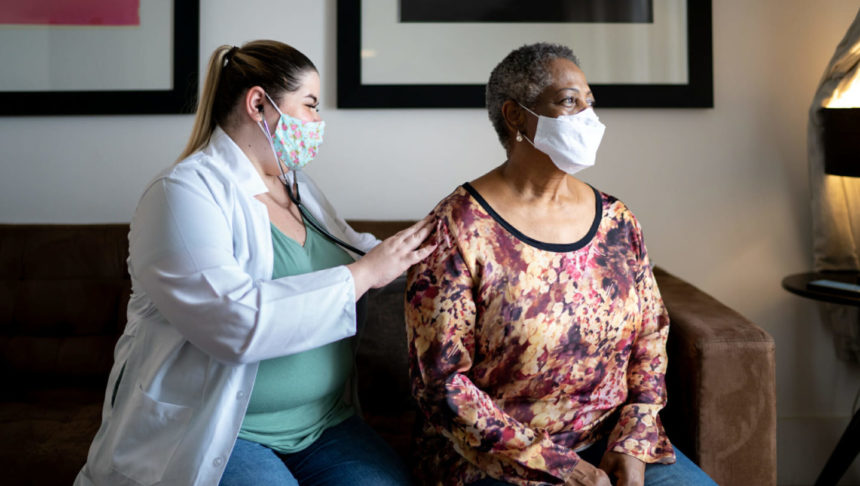
Older adults receive healthcare outside of their homes an average total of three weeks a year (or 20.7 days), according to a study published Monday in Annals of Internal Medicine.
The cross-sectional study included data from 6,619 adults over the age of 65. On average, older adults spent 20.7 days traveling away from their homes to receive healthcare; 17.3% of those days were for office visits, procedures and tests. Of the participants, 11% spent 50 or more days each year receiving healthcare services outside their homes.
Days devoted to healthcare services are known as healthcare contact days. The classification is a newer metric that assesses how much time people spend receiving care.
People who had more contact days tended to be younger, female, white, non-Hispanic, had higher education and income, lived in urban areas, had more chronic conditions, and had care-seeking behaviors like going to the doctor right away when they didn’t feel well. Those are factors that surpass clinical need and could cause people to overuse or underuse medical care, the authors noted.
While healthcare contact days can reflect people who need care and receive it, the time devoted to care requires time and financial resources. Contact days can require caregivers to use their time and money to care for the individuals as well. Understanding this metric can give medical professionals insight into how to optimize contact days for patients and their loved ones.
The data came from the Medicare Current Beneficiary Survey, and it included details on how time is spent in a day as well as variations and patterns in that time.
The study suggested how to use the days more optimally. For instance, many of the days spent going for testing weren’t on the same day as a doctor’s visit. This shows an opportunity for healthcare professionals to better coordinate care in hopes of getting the services on the same day. Office visits, procedures and tests are less likely to be on Fridays, even if that day may be more convenient for patients, the researchers from Brigham and Women’s Hospital and Harvard Medical School found.
In an accompanying editorial, authors from Weill Cornell Medicine and Beth Israel Deaconess Medical Center noted that people’s preferences for contact days vary. The data could tell which days for specific patients are clinically necessary.





